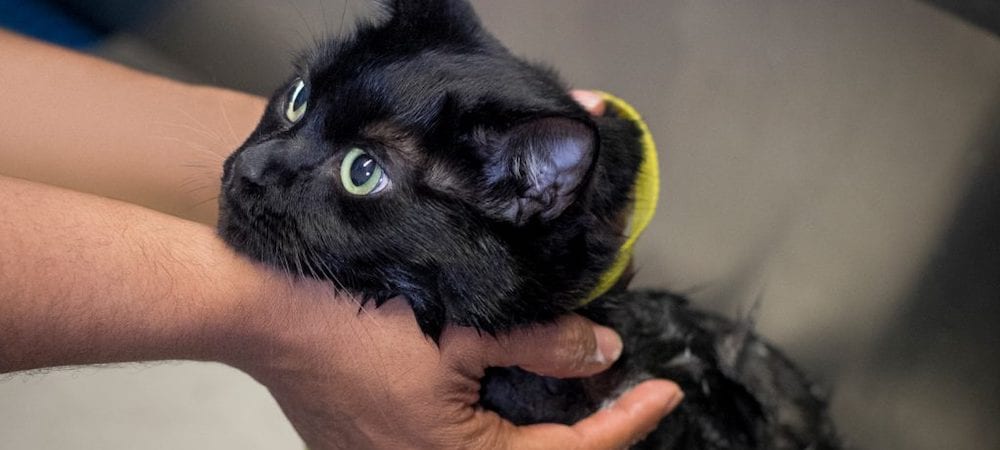How to Give a Stress-Free Cat Bath


If you look like you just got off the set of a horror film after every cat bath, you’re doing it wrong.
Cats and water rarely go together with ease. And trying to submerge them into a tub without researching beforehand can result in trauma for both you and your pet. You’ll likely end up with water on the floor, bites and scratches all over your body and a scared kitty who’s fled the scene, nowhere to be found. Besides, what’s the point? One of the many qualities we love about cats is how incredibly and obsessively clean they are. After a satisfying meal, cats will clean themselves meticulously with their little sandpaper tongues from the tip of their tails to the top of their heads.
Though bathing your cat is not something that is typically needed, there may be times when they need some extra cleaning. Whether they’re older or they’ve found themselves in sticky situations, you may indeed find yourself faced with the tedious task.
Here are some helpful tips to to make cat baths less stressful for you and your pet:
- Enlist another person to help you, preferably someone your cat knows and likes. The other person can help hold the cat while you bathe them.
- Trim your cat’s nails with clippers or a grinder before you attempt to bathe your cat. Most cats will attempt to get away from you, so keeping those nails trimmed will help reduce the amount of scratches you receive during the process.
- Brush out their fur with a brush to get out the tangles before you start the bath. If there are any mats or knots, getting them wet will only make them tighter so it’s wise to eliminate them before you put the cat into the water.
- Use a towel on the bottom of the bathtub as a bathmat, so your kitty can get a good grip on the surface.
- Only use a few inches of water, and keep the temperature very mild. Fill the tub and some extra buckets of water before bringing your cat into the bathroom so the running water won’t frighten them.
- Use a shampoo that is made specifically for bathing cats. Anything else could be harmful or even toxic to your cat.
- Be very careful with your cat’s head, and avoid getting water into your cat’s eyes, ears or nose.
- Use a soft cloth to soap down your kitty, then rinse them well with warm water until all the soap is out of their fur. Use the extra buckets of water to rinse the soap out.
- Speak to your cat in calm soothing tones as you bathe them. This will help to keep them calm.
- Blot them dry with a towel and let them air dry in a warm draft-free room. If your cat has longer fur, you may have to comb it out while it’s drying to eliminate tangling.
If your cat is absolutely intolerable of water, have no fear. Waterless cat baths are also an option! Look for cat-safe dry shampoo or wipes at your local pet supply store.
Of course, kittens are much easier to bathe, but they are also more fragile. Be careful not to get their heads wet, and dry them with a hairdryer immediately after the bath to maintain body temperature.
For more information, check out this video of one of our staffers bathing her foster kitten.



